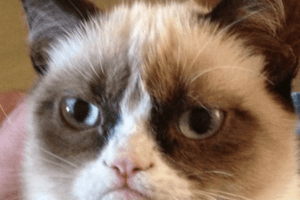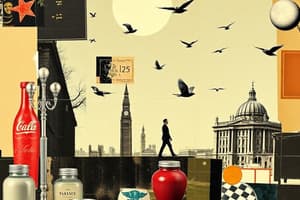Podcast
Questions and Answers
These are graphic symbols or designs used by companies to identify their products or brands.
These are graphic symbols or designs used by companies to identify their products or brands.
Logos
Text-based logos.
Text-based logos.
Workmarks
Visual elements.
Visual elements.
Icons or Symbols
Text and Symbols.
Text and Symbols.
Text inside a Symbol
Text inside a Symbol
Purpose of Logos
Purpose of Logos
Logo design should be...
Logo design should be...
Tools for Logo Creation
Tools for Logo Creation
Ethical considerations in Logo Desing
Ethical considerations in Logo Desing
A short phrase that captures a brand’s essence.
A short phrase that captures a brand’s essence.
Taglines should be...
Taglines should be...
Ethical considerations in Taglines
Ethical considerations in Taglines
This protects brand identity through words, symbols, or designs.
This protects brand identity through words, symbols, or designs.
Purpose of trademarks
Purpose of trademarks
Ethical considerations in Trademarking
Ethical considerations in Trademarking
They handle trademark, registration, disputes, and public awareness.
They handle trademark, registration, disputes, and public awareness.
IPOPHL stands for...
IPOPHL stands for...
Key Functions of IPOPHL
Key Functions of IPOPHL
IPOPHL handles applications for registering trademarks, ensuring that logos, taglines, and other brand identifiers are unique and protected.
IPOPHL handles applications for registering trademarks, ensuring that logos, taglines, and other brand identifiers are unique and protected.
It resolves conflicts related to intellectual property, such as trademark infringement cases.
It resolves conflicts related to intellectual property, such as trademark infringement cases.
IPOPHL promotes understanding of intellectual property rights and their importance to businesses and individuals.
IPOPHL promotes understanding of intellectual property rights and their importance to businesses and individuals.
Flashcards
What is a Product?
What is a Product?
A good, service, or idea offered to a market to satisfy a customer's desire or need. Can be tangible or intangible.
Core Benefit
Core Benefit
The fundamental need that is satisfied when a customer buys a product.
Product Line
Product Line
A group of closely related product items, considered a unit for marketing, technical, or end-use reasons.
Study Notes
- A product is a key variable in the marketing mix.
- Products are typically a firm's most important asset.
What is a Product?
- A product is a good, service, or idea received in an exchange.
- It is anything offered to a market to satisfy a customer's desire or need.
- Products can be tangible or intangible.
Tangible Product
- A tangible product is a physical object perceived by touch.
- These are things used everyday that can be felt with the five senses.
- Examples include buildings, vehicles, gadgets, or clothing.
Intangible Product
- It cannot be felt, touched, or measured.
- It is non-physical but valuable.
- Services include performance and efforts that can be durable or nondurable and the application of human and mechanical efforts to people or objects.
- Examples include travel agency bookings, medical examinations, daycare, banking, marketing, and maintenance & repair.
- Ideas include a concept, philosophy, image, issues, or inventions.
- Ideas can provide psychological stimulation that helps in solving problems or adjusting to the environment.
- The invention of the light bulb by General Electric or an internet load are examples of ideas.
Product Anatomy
- The product is the central component of the marketing mix because other Ps in the marketing mix exist to sell the product.
- Products come in simplified and extended types.
Simplified Products
- These have two types: Core, Actual and Augmented Products.
Extended Products
- These have products with Core Benefits, are Generic, Expected, Augmented and Potential.
3 Levels of Product (Simplified)
- The core benefit is the fundamental need satisfied when a customer buys a product.
- The actual product includes its features and design.
- The augmented product accounts for the non-physical parts of the product.
- The augmented product helps in tailoring the product to meet specific customer needs.
5 Levels of Product by Kotler (Extended)
- Core Benefit is the basic good or service purchased.
- The basic product forms the nucleus of the total product.
- It constitutes the problem-solving features or basic benefits that consumers seek when they acquire a product.
- The expected product/level includes a set of attributes and conditions that the buyer expects or requires.
- The Augmented product is what the customer is really buying.
- It is a combination of what the seller intends and the buyer perceives.
- The potential product encompasses all augmentations and transformations it might undergo in the future.
Classification of Products
- Products can be classified into Consumer or Business Products.
Consumer Products
- These are for personal or household use.
Business Products
- These are used to manufacture other products, to resell, or for general business operations.
Consumer Products
- Convenience goods are inexpensive and require minimal effort when purchasing, like shampoo, toilet paper or candles.
- Shopping goods are those in which consumers invest time and effort, for example phones or laptops.
- Specialty goods include products or services with unique characteristics or brand identification where buyers are willing to spend considerable effort, for example designer clothes or luxury cars.
- Unsought products are those that are purchased when a sudden problem needs to be solved, like life insurance or fire extinguishers.
Business Products
- Installations include facilities and major pieces of equipment that are non-portable.
- Installations are used directly in the production process.
- Accessory Equipment does not become part of the final physical product but is used in production or office.
- Usually, these are cheaper activities purchased routinely with less negotiation.
- Raw Materials are basic natural materials/substances used to manufacture goods.
- Component Parts are part of a physical product that can be finished items ready for assembly or products needing minimal processing before assembly.
- Process Materials are used directly in the production of other products not readily identifiable.
- Maintenance, Repair, Operations Supplies (MRO Supplies) facilitate production/operations but do not become part of the finished product.
- Business Services are the intangible products organizations use in their operations, specifically financial, legal, market research, information technology or cleaning services.
Product Line
- Product line is a group of closely related product items, considered a unit for marketing, technical, or end-use reasons.
- A product line refers to the assortment of similar things that the firm holds.
Advantages of Expanding Product Line
- Expanding product lines can lead to increased revenue, consumer loyalty, a greater market share, and enhanced reputation.
Product Mix
- It is also known as a product assortment or product portfolio.
- The product mix refers to the complete set of products and/or services a company offers.
- A product mix consists of product lines, which are associated items that consumers tend to use together or think of as similar products or services.
Dimensions of Product Mix
- Width (or breadth) refers to the number of product lines a company offers.
- Length refers to the total number of products in a firm's product mix.
- Depth refers to the number of variations within a product line.
- Consistency refers to how closely related product lines are based on use, production, and distribution channels.
- Consistency is advantageous for firms positioning as a niche producer or distributor.
Advantages of a Product Mix
- A firm's product mix impacts its brand image.
- Maintaining high product width and depth diversifies product risk and reduces dependence on one product line.
- Unnecessary product width diversification can hurt a brand's image; for example, if Apple expanded into refrigerators, it would likely negatively impact its brand image.
- Expanding the width of a product mix can provide a company with the ability to satisfy the needs/demands of different consumers and diversify risks.
- Expanding the depth of a product mix can provide the ability to readdress & better fulfill current consumers' needs.
Difference of Product Line and Product Mix
- A product line is a group of closely related products; a product mix is the complete set of products/services a company offers.
- Product line strategy can be either full-line or limited-line.
- Product Mix includes the dimensions of width, length, depth, and consistency.
- Product Line includes price range, functionality and target audience/brand.
- Product Mix includes company's age, financial standing and brand identity.
Importance of Product Line and Product Mix in a Business
- Inventory Management is a part of the supply chain, helping to order, stock, and utilize a business' products.
- A business' product mix helps determine a brand's image by ensuring a company stays consistent with its products.
- Knowing what products core customers purchase from the product mix is useful in knowing whether adding a product would be monetarily beneficial.
Studying That Suits You
Use AI to generate personalized quizzes and flashcards to suit your learning preferences.




